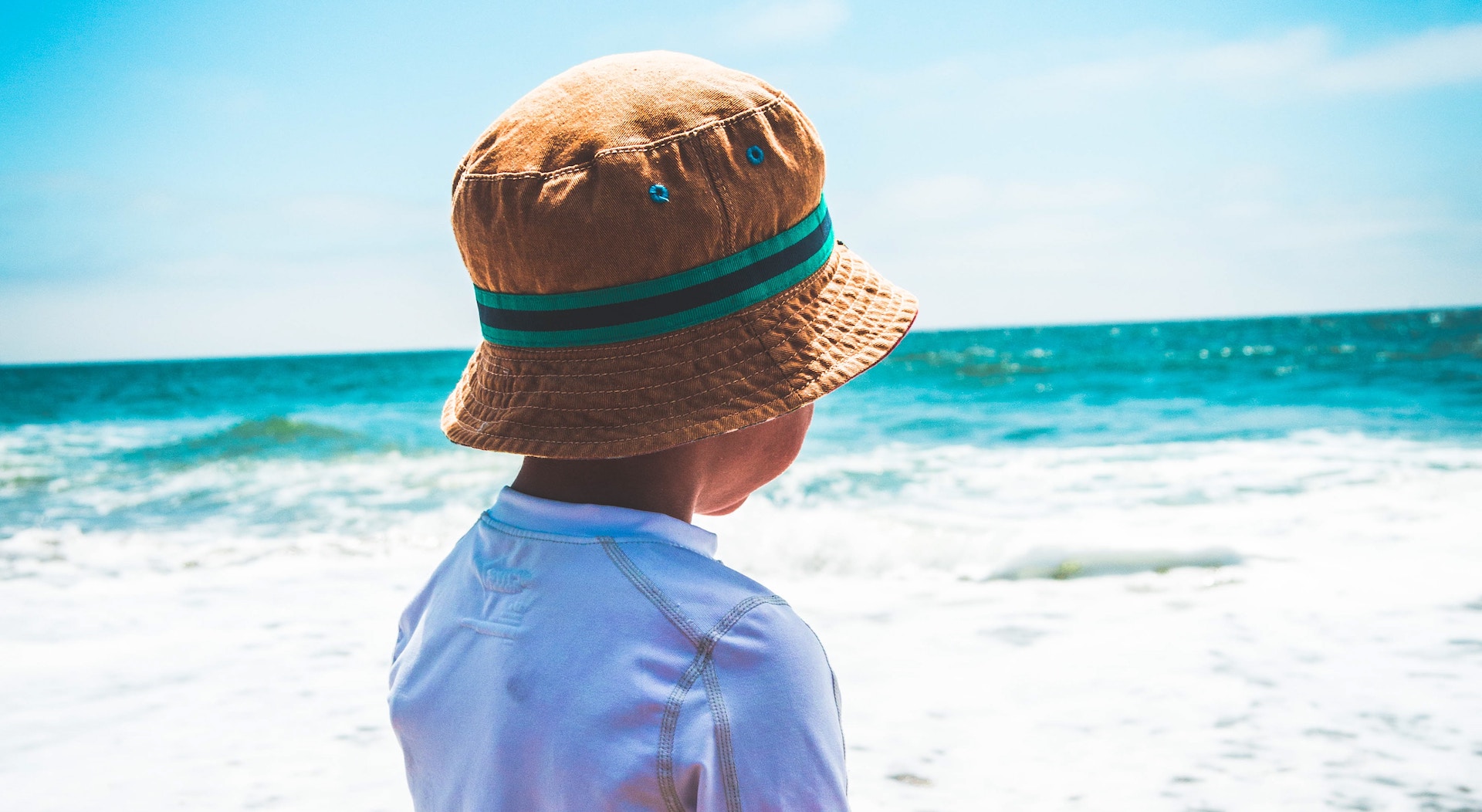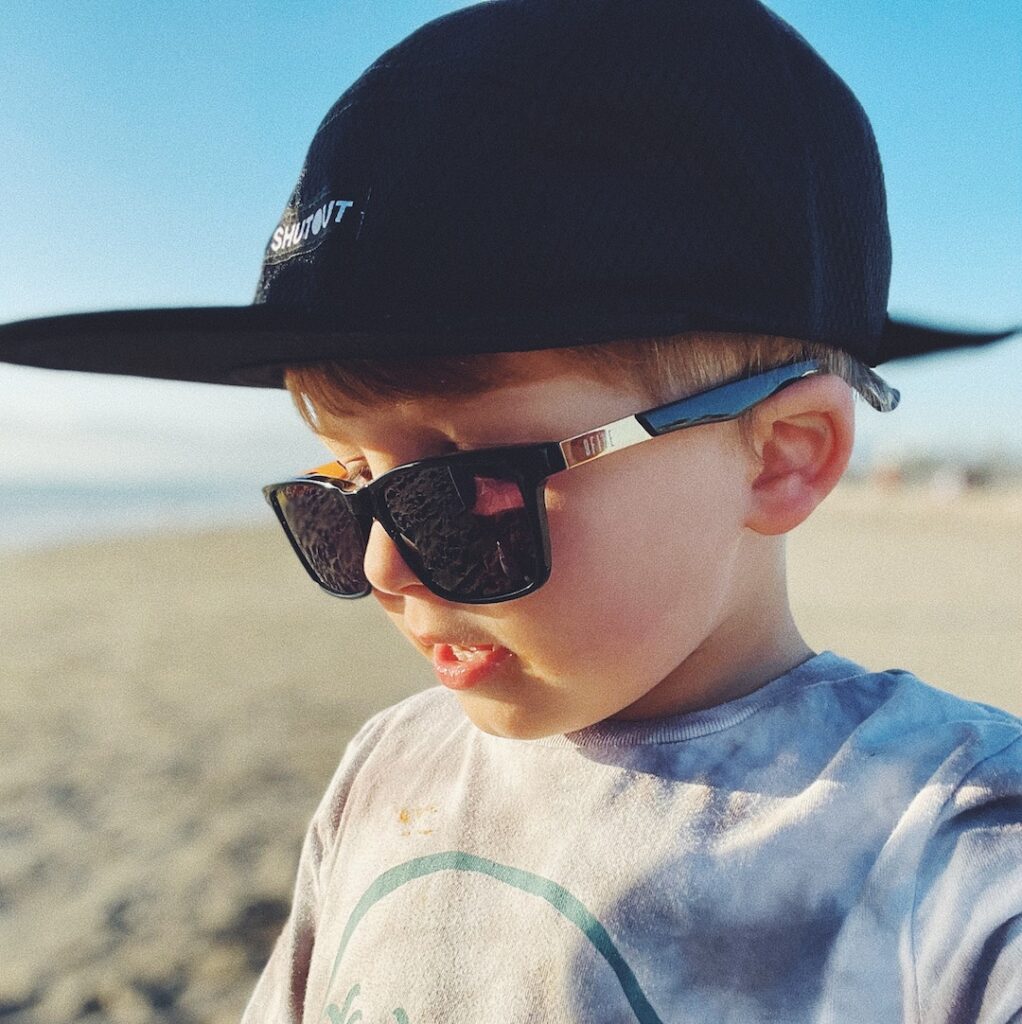Sun safety for kids
Sun safety for kids
BY NATIONAL PHARMACIES CHIEF PHARMACIST, BEC ROGERS.
Australia is well known for having one of the highest rates of skin cancer in the world. Up to 2 in 3 Australians develop skin cancer before the age of 70. But it’s not just older people who are affected by skin cancer, with Australians aged 15-29 years the most common age group for a melanoma diagnosis. In positive news, increased awareness and primary prevention strategies are now contributing to a decline in the incidence of melanoma. So, what do you need to know about protecting your kids from the harmful effects of the sun? Read on to learn more.

SLIP, SLOP, SLAP, SEEK & SLIDE
Slip on a shirt, Slop on sunscreen, Slap on a hat, Seek shade & Slide on sunglasses. The Cancer Council launched this public health campaign in 1981 and it is widely credited with changing attitudes and behaviours towards sun safety in Australia. Adults should remember that children learn by example so it’s important to follow these guidelines yourselves too to help keep your whole family safe from the sun.
Slip on a shirt – Some kids can be fussy about what clothes they will and won’t wear. Having a selection of light, long-sleeved, collared shirts and letting the child choose from these on days they’ll be in the sun may help.
Slop on sunscreen – are you applying sunscreen correctly? Follow these tips:
- Apply 20 minutes prior to exposure to the sun to give it a chance to start working.
- Apply sunscreen to clean, dry skin.
- Use enough sunscreen! Adults are recommended to apply 1 teaspoon for each arm, leg, body front, body back and face/neck/ears and children should use a similar ratio depending on their physical size.
- Reapply at least every 2 hours and after swimming, sport, or significant sweating as this can reduce the effectiveness of sunscreen.
- Sunscreen will not completely block out all UV radiation so should never be the only form of sun protection used.
- There are many different types of sunscreens. Some are better for sensitive skin and children, and they may be available in spray, lotion, cream, or roll-on form. Choose the form that suits your family best and that your children are happy to apply.
- Coloured zinc cream can make sun protection fun for kids! Make sure you apply sunscreen to any areas not completely covered with zinc cream.
Slap on a hat – Broad-brimmed or bucket hats that protect the face, neck, ears, and crown of the head are best. Like with clothing, try letting your child be involved in choosing their own hat – they may be more likely to keep it on. Bucket hats with a tie or elastic under the chin are helpful for keeping hats on very young children.
Seek shade – Keep an eye on the UV rating (you can search this online) and play with kids inside or in the shade during the hottest part of the day. Shade may take the form of trees, shade sails or even an umbrella.
Slide on sunglasses – wrap-around sunglasses that are category 2 or higher for their protection rating are important to protect eyes against UV radiation. An elastic strap can help to keep sunglasses on babies and young children.

What about babies?
Babies have more sensitive skin than older children and adults. Use of sunscreen in babies less than 6 months is not generally recommended due to the risk of skin reaction. Babies under the age of 1 year are recommended to be kept out of direct sunlight wherever possible when the UV level is 3 or above. In instances where this is not possible, babies should be protected by shade, protective clothing, and a hat.
My child is sunburned, how can I help them?
- Maintain hydration by giving them plenty of water to drink, or Hydralyte® can be purchased at the pharmacy.
- Cool the skin with cool baths or showers.
- Hydrating gels such as Solosite Wound gel ® can be applied to the sunburn.
- Pain relief such as paracetamol or ibuprofen can be given if needed.
- Blisters, swollen skin, and severe pain are signs of severe sunburn, and you should seek medical attention.
- If you’re unsure, ask your pharmacist for advice.
Can some medicines increase the risk of sunburn?
There are some antibiotics and other medicines, as well as cosmetic skincare products like retinols and AHA’s that can make your skin more sensitive to the sun, and consequently more likely to burn. You should wear an appropriate sunscreen daily if you’re on such medicines. Ask your pharmacist if your medicines can increase your risk of getting sunburned.
REFERENCES:
https://www.rch.org.au/kidsinfo/fact_sheets/Safety_Sun_protection/
https://www.cancer.org.au/about-us/policy-and-advocacy/prevention-policy/national-cancer-prevention-policy/skin-cancer-statistics-and-issues/skin-cancer-incidence-and-mortality
https://www.cancer.org.au/cancer-information/causes-and-prevention/sun-safety/campaigns-and-events/slip-slop-slap-seek-slide
https://www.cancer.org.au/cancer-information/causes-and-prevention/sun-safety/about-sunscreen/sunscreen-faqs